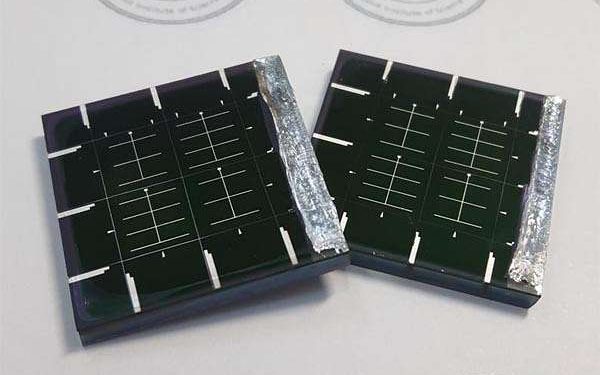Next-generation silver doping method enhances CZTSSe solar cell performance
by Riko Seibo
Tokyo, Japan (SPX) Oct 28, 2024
A team of leading researchers from the Division of Energy and Environmental Technology at DGIST, including Kee-jeong Yang, Dae-hwan Kim, and Jin-gyu Kang, in collaboration with Professor Kim Jun-ho of Incheon National University and Professor Koo Sang-mo from the Department of Electronic Materials Engineering, has pioneered a method to enhance the efficiency of kesterite (CZTSSe) thin-film solar cells by integrating silver (Ag) doping. This innovative technique suppresses cell defects, fosters crystal growth, and is positioned to support the commercial viability of CZTSSe solar cells.
CZTSSe cells, which are based on copper, zinc, tin, sulfur, and selenium, are recognized for their cost efficiency, abundant resource base, and eco-friendliness. Their material composition makes them a promising, scalable alternative to conventional solar cells that rely on scarce metals. Despite these advantages, CZTSSe cells have historically been hindered by low efficiency and high current losses due to electron-hole recombination, posing challenges to commercialization.
Addressing this, the DGIST-led team introduced Ag into the solar cell precursor, allowing the Ag to act as a stabilizer for Sn while promoting better material integration at lower temperatures. This process facilitates faster and larger crystal formation, effectively reducing defects and improving cell efficiency. Through systematic testing, the researchers identified that Ag placement within the precursor has a significant impact on defect and recombination behaviors. Their findings suggest that correct Ag placement can prevent Sn loss and optimize defect suppression, while incorrect placement could impede alloy formation, leading to performance-degrading defect clusters.
Additionally, the team discovered that Ag doping contributes to the formation of a liquid phase that accelerates crystal growth, enhancing the absorber layer’s density and crystallinity. This results in an improved energy band structure and minimizes defects, thus facilitating more efficient charge transport across the cell. These advancements have the potential to drive the production of high-performance, cost-effective solar cells.
“In this study, we analyzed the effect of Ag doping, which had not been clearly identified before, process by process, and found that silver plays a role in suppressing tin loss and improving defects,” said Yang Kee-jeong, a senior researcher at the Division of Energy and Environmental Technology. “The results provide important insights into the design of silver-doped precursor structures to improve solar cell efficiency and are expected to contribute to the development of various solar cell technologies.”
This research received funding from the Ministry of Science and ICT’s Source Technology Development Program (Leapfrog Development of Carbon Neutral Technology) and the Future-Leading Specialization Research Program (Grand Challenge Research and Innovation Project (P-CoE)). The findings were published in the journal *Energy and Environmental Science* (Impact Factor: 32.4), a prominent publication in the energy sector.
Research Report:Reducing carrier recombination loss by suppressing Sn loss and defect formation via Ag doping in Cu2ZnSn(S,Se)4 solar cells
Related Links
Daegu Gyeongbuk Institute of Science and Technology
All About Solar Energy at SolarDaily.com


















